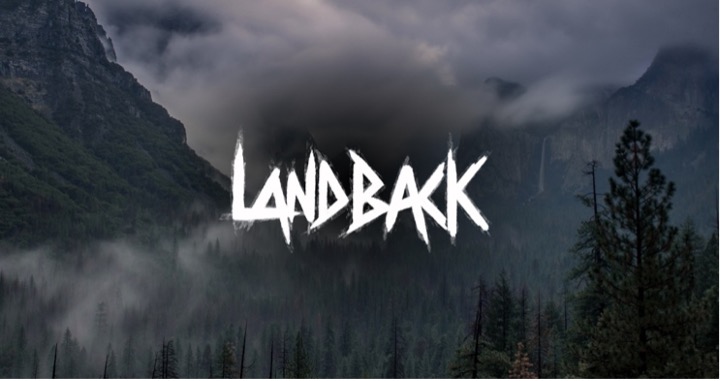
There’s a chance that you’ve heard about Land Back or #LandBack through social media. The movement has gained traction lately through sites like Instagram, Twitter, and even TikTok. But despite its recent popularity, many people are still confused about what Land Back really means. According NDN Collective, an organization which runs the official Land Back Campaign, Land Back is “the reclamation of everything stolen from the original Peoples.” This includes land, culture, and everything else essential to Indigenous self-determination.
However, Land Back does not mean tribal nations want to reclaim their lands and force everybody to leave. That would be genocide.
Most people alive today have not directly participated in land theft and genocide. However, all people today unfairly benefit from it. Millions of Indigenous people were violently removed from the lands on which we live. Therefore, Land Back calls for the restoration of all that has been taken, and continues to be taken, from Indigenous people while avoiding unnecessary harm done to non-Indigenous people. If Indigenous peoples reclaimed all North America and then forced everyone to leave, we would be committing the same atrocities that happened to us.
That’s why Land Back calls for public lands to be returned to tribal nations. The US government owns many of the most important spiritual places for Indigenous people. It has obtained these lands through violence and continues to exclude Indigenous people from them today. Further, tribal nations possess the cultural knowledge and administrative capabilities to steward their lands better than the federal government. This doesn’t mean that tribal nations want to exclude people from national parks. On the contrary, tribal nations could make money from admissions fees and hunting permits which would go towards funding culturally relevant land management practices.
In other contexts, Land Back means finding creative ways to give back to Indigenous people. In urban settings, where physical land cannot feasibly be returned, Land Back could look like developing a cultural space where Indigenous peoples can hold community. For the average person, Land Back may be paying a voluntary “land tax” to support a local Indigenous tribe or even something as simple as attending a powwow or supporting an Indigenous artist.
Fundamentally, Land Back is about knowing whose lands you’re on, educating others, and taking action to promote Indigenous self-determination.
The Origins of Land Back
The fight for Land Back is not new. Our ancestors have fought for the full restoration of our ways of life for centuries. However, the term “Land Back” has modern origins. According to many sources, it was first coined in a satirical online post by Arnell Tailfeathers (Blackfoot Confederacy), in 2018. Then, #LandBack quickly trended as a hashtag on Twitter and Instagram. It wasn’t long before the term found its way into clothing and even public art installations.
Then, on July 3, 2020, during President Trump’s visit to South Dakota, land defenders took to Mount Rushmore to protest the illegal seizure of the Black Hills from the Lakota people. Land Back and #LandBack could be seen on the signs of many activists. During these protests, many members of NDN Collective were arrested including Nick Tilsen, president of NDN Collective. This spurred NDN Collective to launch the Land Back Campaign on Indigenous People’s Day 2020 as a way to unite Land Back movements across the United States and the world.
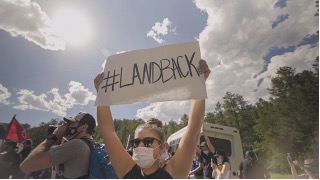
Public Lands and Returning the National Parks
After the Indian Reorganization Act of 1934, the federal government technically established a system to reclaim lands stolen from tribal nations. However, this system has been largely unsuccessful despite its 87-year-long history. Only 8% of stolen lands have been returned to tribal nations.
Additionally, many tribal nation’s most sacred sites are public lands and are exempt from this program. That’s why Indigenous activists are calling for national parks to be returned to tribal governments. Not only do tribal nations have the largest stake in protecting their sacred sites, but they also deserve to be stewards of lands they have managed for millennia.
For Indigenous people, land is much more than just a physical resource. Indigenous cultural and religious beliefs are centered around a specific part of the world. In many Indigenous languages, there’s even not a distinction between land and family. For my own ancestors, the Trail of Tears was devastating because of the thousands of kin who died along the way, and for the kin we were forced to leave behind: our lands. The Chickasaw belief system revolved completely around our relationship with the Mississippi River. West of the Mississippi River symbolized death.
To establish National Parks, most tribal nations were violently removed from their homelands and are still barred from them today. For example, the US government stole the Black Hills from the Lakota people after massacring innocent children and eradicating the buffalo. The government guaranteed that the Lakota people would maintain ownership of the Black Hills through a treaty. However, the US government promptly ignored the treaty, stole the Lakota homelands, and carved the face of its presidents into the sacred Black Hills. In 1980, the US Indian Claims Commission acknowledged the theft of the Black Hills and offered a payment of $102 million which the Lakota promptly refused. The federal government placed the money in trust, and it currently totals $1.5 billion. Still, the Lakota refuse to accept a payment for lands they never sold.
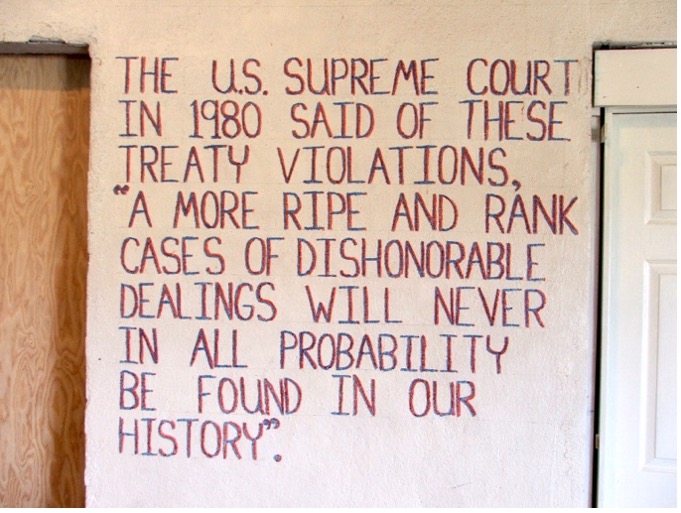
There is a misconception that tribal nations would not be able to care for national parks as well as the federal government. Unfortunately, this type of thinking echoes the one-dimensional depictions of Indian Country portrayed by the media. However, tribal nations have the same administrative capabilities of the federal government while also possessing a greater amount of traditional knowledge and cultural responsibility. Additionally, some tribal nations now bring in even larger revenues than the GDPs of many countries.
Another misconception is that tribal governments would prevent visitors from accessing national parks. This simply isn’t true. Tribal nations can make money off admissions fees as well as the sale of hunting and fishing permits. It would also help to provide jobs and to fund culturally relevant land management practices. In New Mexico, this is how tribal nations manage many popular recreational spaces.
Land Back in Urban Settings and Private Lands
It may not be ethical or feasible to return land in urban settings, so more creative approaches must be taken to support Land Back. There have been some successful recent Land Back initiatives in urban settings from the construction of a cutting-edge Indigenous Cultural Center to a voluntary “land tax.”
A cutting-edge Indigenous Cultural Center has been proposed in San Francisco, CA, called The Village San Francisco. It includes housing, healthcare, and community gathering spaces for Indigenous people. Everything was designed with Indigenous worldviews in mind, including the architecture. There is even a place to hold ceremony and to grow traditional plants. The Village San Francisco will also provide a physical home to the American Indian Cultural Center of San Francisco which has been forced to meet virtually for many years. The building was proposed in 2019 as part of San Francisco’s new American Indian Cultural District and will cost $65 million dollars.
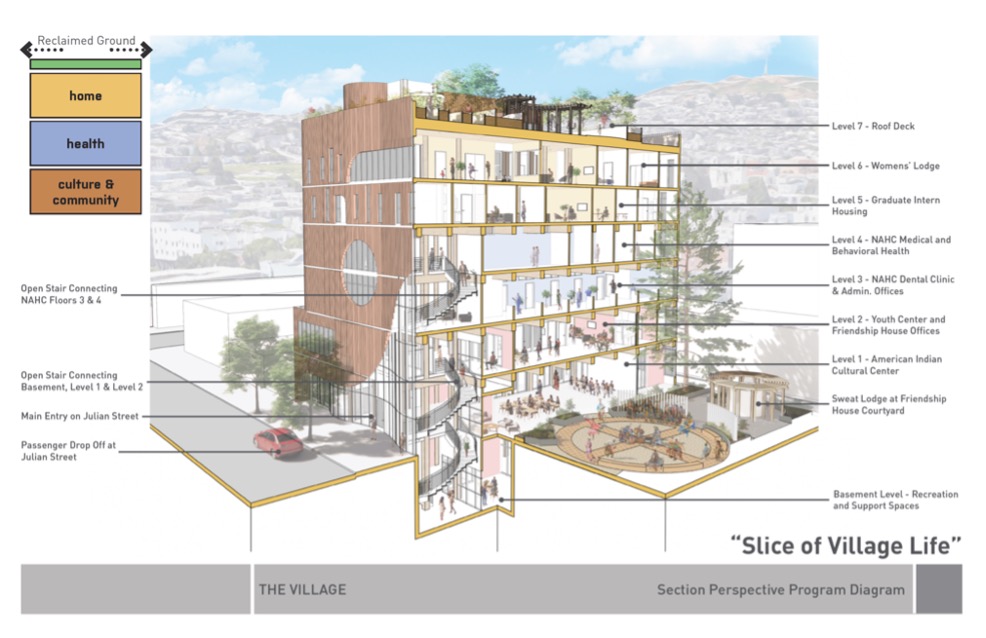
Real Rent Duwamish, a non-profit based out of Seattle, WA, is an example of a voluntary land tax. People can make a payment each month to Real Rent which distributes it to the local Duwamish tribe. While it may not be feasible for the average Seattleite to return land to the Duwamish tribe, it’s entirely possible to financially support the tribe on whose lands you live. This is Land Back.
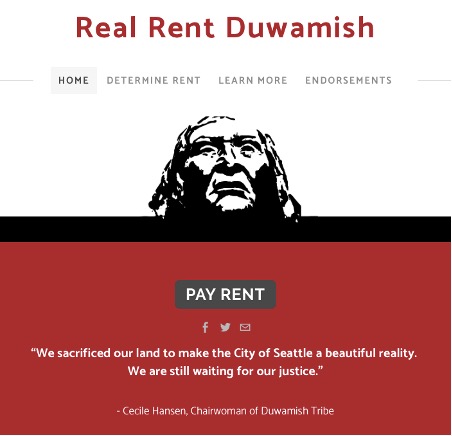
While there might not be a land tax set up near you, anyone can participate in Land Back. Discover the tribes in your area and find a way to support their cultural activities like powwows and story circles. There are also some wonderful Native artisans online.
Not Just the Land
For tribal nations, Land Back means much more than the physical return of land. It means the freedom to practice our ways of life and to heal our traditions. It means self-determination. It means that people continuously search for ways to give back to Indigenous people in their daily lives. We must have a reckoning of all that has been stolen from Indigenous people. Then, we must unite and engage in the healing process which entails land return and cultural restoration. Save your land acknowledgements until after self-determination has been fully restored. #LandBack
Works Cited:
- American Indian Cultural District, https://americanindianculturaldistrict.org/.
- France 24. “Vast ‘Indian Land’ Sign Draws Visitors to Desert X Art Festival.” France 24, France 24, 12 Mar. 2021, https://www.france24.com/en/live-news/20210312-vast-indian-land-sign-draws-visitors-to-desert-x-art-festival.
- Guide, Staff. “9 Native-Owned Brands & Artisans to Support This Indigenous Peoples’ Day.” The Good Trade, The Good Trade, 14 Oct. 2021, https://www.thegoodtrade.com/features/native-owned-brands-to-support-on-indigenous-peoples-day.
- History.com Editors. “Wounded Knee.” History.com, A&E Television Networks, 6 Nov. 2009, https://www.history.com/topics/native-american-history/wounded-knee.
- Indianz. “Chickasaw Nation Gaming Revenues Hit $1.44 Billion as Enterprise Keeps Growing.” Indianz, Indianzhttps://Www.indianz.com/Z.png, 7 Dec. 2017, https://www.indianz.com/IndianGaming/2017/12/07/chickasaw-nation-gaming-revenues-hit-144.asp.
- Indianz. “Native Sun News Today: Black Hills Land Claim Attorney Passes On.” Indianz, Indianzhttps://Www.indianz.com/Z.png, 7 Aug. 2019, https://www.indianz.com/News/2019/08/07/native-sun-news-today-black-hills-land-c.asp.
- “Landback Manifesto.” LANDBACK, https://landback.org/manifesto/.
- Moscufo, Michela. “For These Indigenous Artists ‘Land Back’ Is Both a Political Message and a Fundraising Opportunity.” Forbes, Forbes Magazine, 2 Oct. 2020, https://www.forbes.com/sites/michelamoscufo/2020/09/29/for-these-indigenous-artists-land-back-is-both-a-political-message-and-a-fundraising-opportunity/?sh=d67d79f6c9cc.
- “Nambé Falls & Lake Recreation Area.” Namb Pueblo Namb Falls, https://www.nambepueblo.org/nambe-falls-lake/.
- Native Land, Oct. 2021, https://native-land.ca/.
- Phippen, J. Weston. “‘Kill Every Buffalo You Can! Every Buffalo Dead Is an Indian Gone.’” The Atlantic, Atlantic Media Company, 7 June 2021, https://www.theatlantic.com/national/archive/2016/05/the-buffalo-killers/482349/.
- “Real Rent Duwamish.” Real Rent Duwamish, https://www.realrentduwamish.org/.
- Smith, Quinn. “A Stolen History, Future Claims: The Blackfeet Nation and Glacier National Park.” The Wellian Magazine, https://sites.duke.edu/thewellianmag/2020/10/14/a-stolen-history-future-claims/.
- Treuer, David. “Return the National Parks to the Tribes.” The Atlantic, Atlantic Media Company, 2 Sept. 2021, https://www.theatlantic.com/magazine/archive/2021/05/return-the-national-parks-to-the-tribes/618395/.
- “The Village.” Friendship House, https://www.friendshiphousesf.org/the-village.
- www.browsermedia.com, BrowserMedia -. “Trust Land.” NCAI, https://www.ncai.org/policy-issues/land-natural-resources/trust-land.
